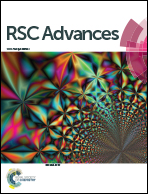LEIS study of the protection of zinc phosphate/epoxy coatings under cathodic protection
Abstract
The anti-corrosion properties of the defective zinc phosphate/epoxy coatings under cathodic protection (CP) in a 3.5% NaCl solution were evaluated by localized electrochemical impedance spectroscopy (LEIS), scanning electrochemical microscopy and X-ray diffraction. The results revealed that the application of CP inhibited the formation of the phosphate film, compared with exposure at open circuit potential (OCP). Moreover, a CP/OCP cycle was beneficial to form a phosphate film on the defective coatings, particularly under a −0.65 V/OCP cycle. The mechanism of zinc phosphate modifying the corrosion process of the defective coatings under different cathodic potentials was also considered.


 Please wait while we load your content...
Please wait while we load your content...